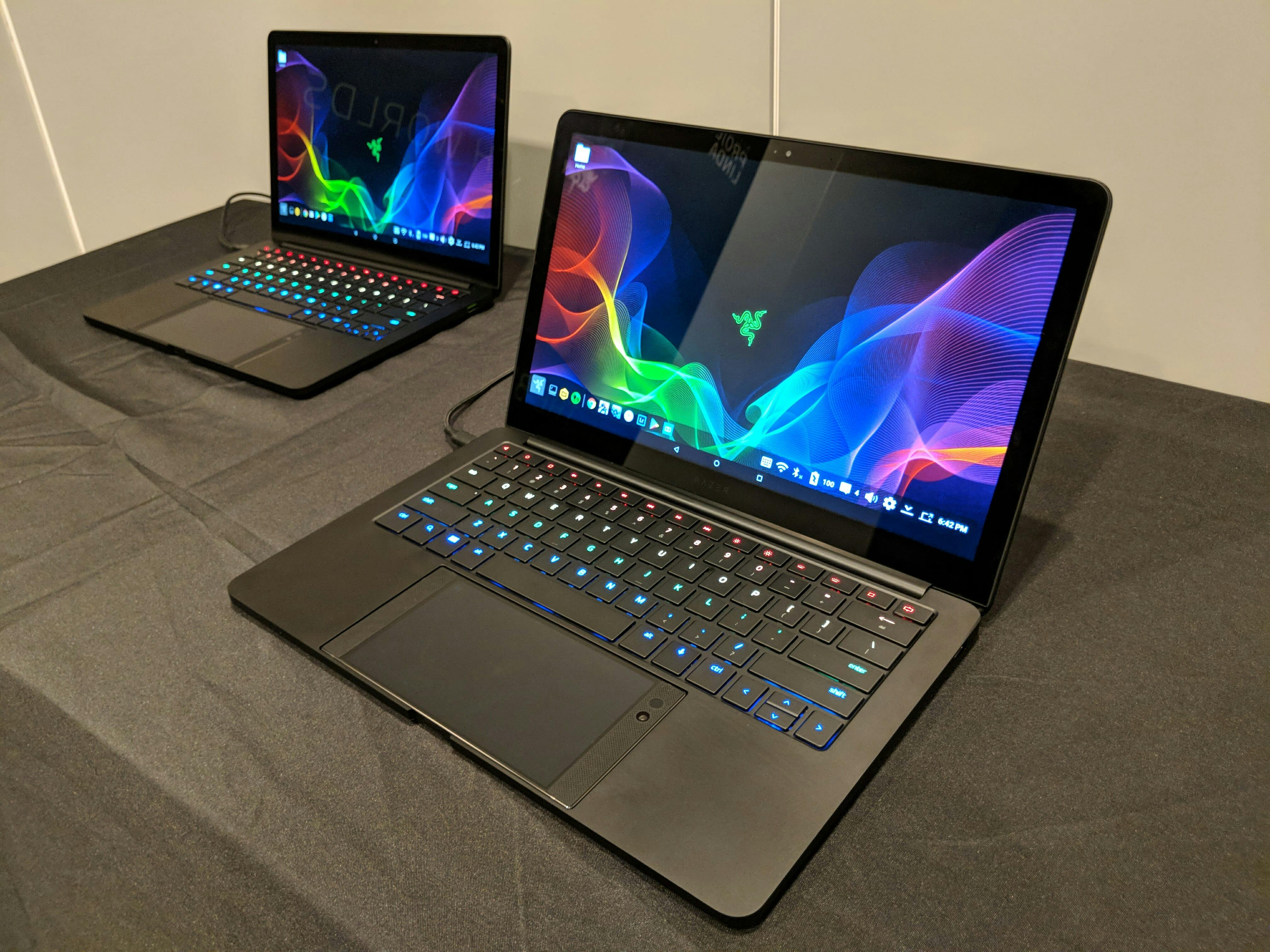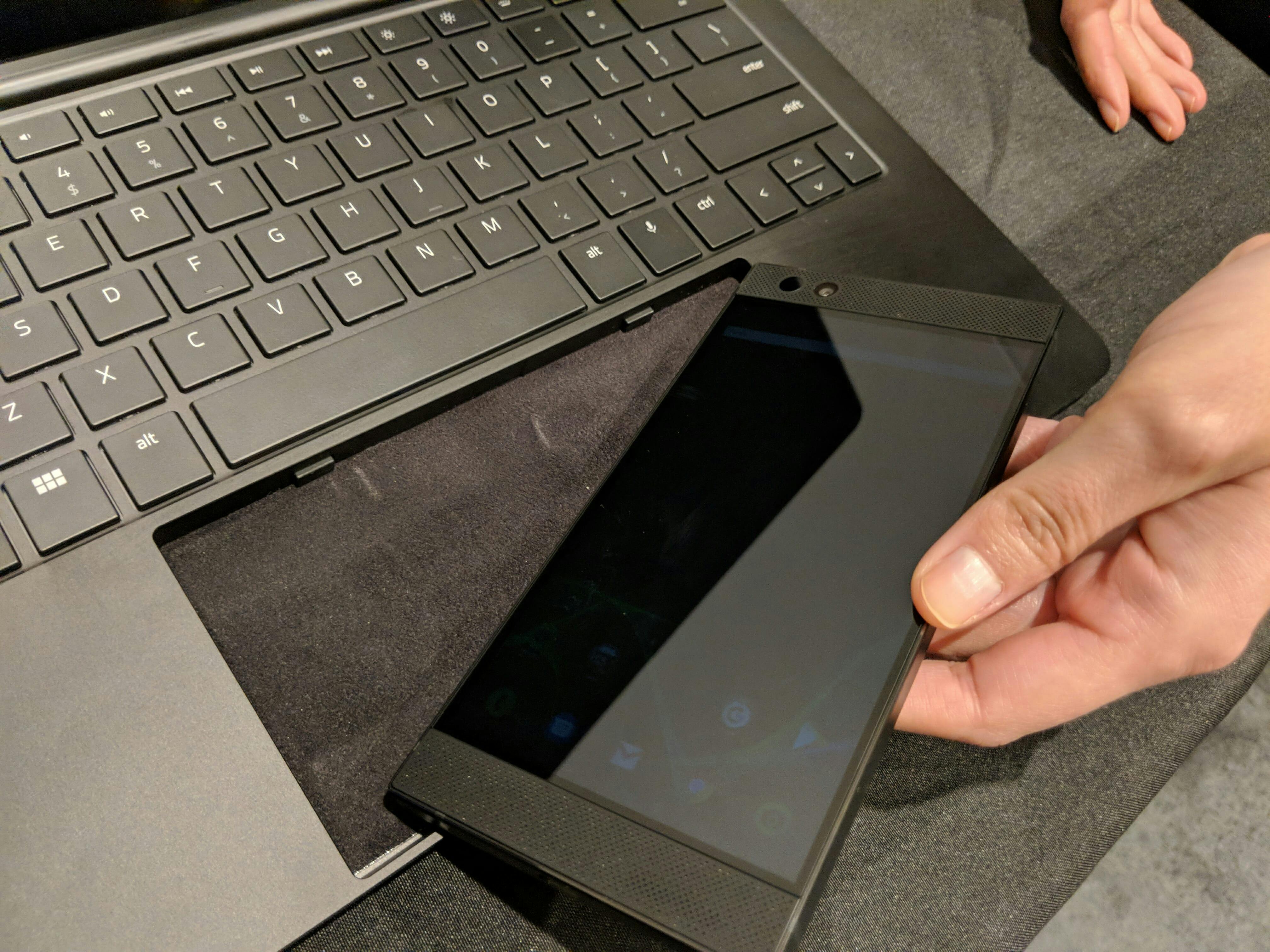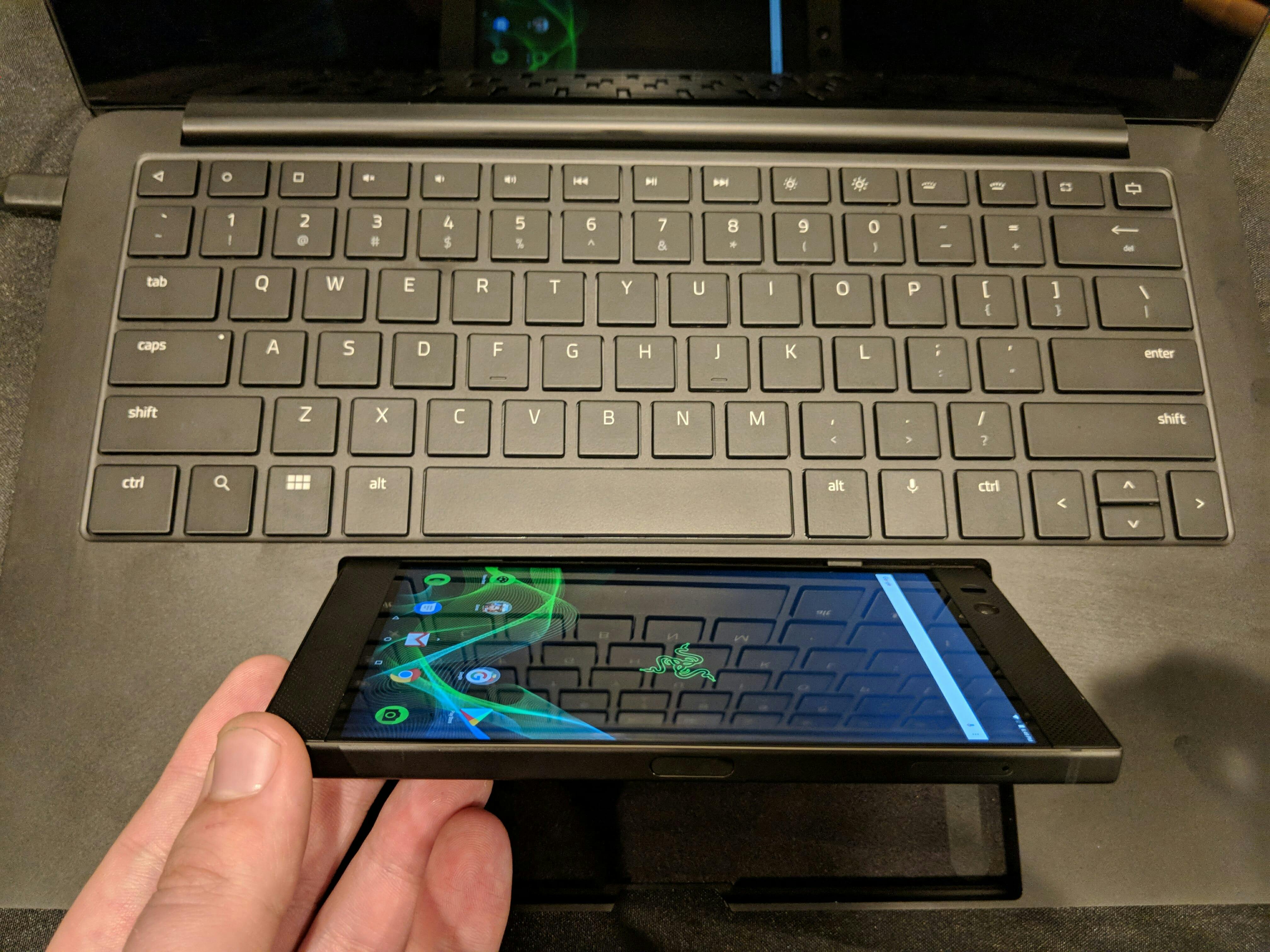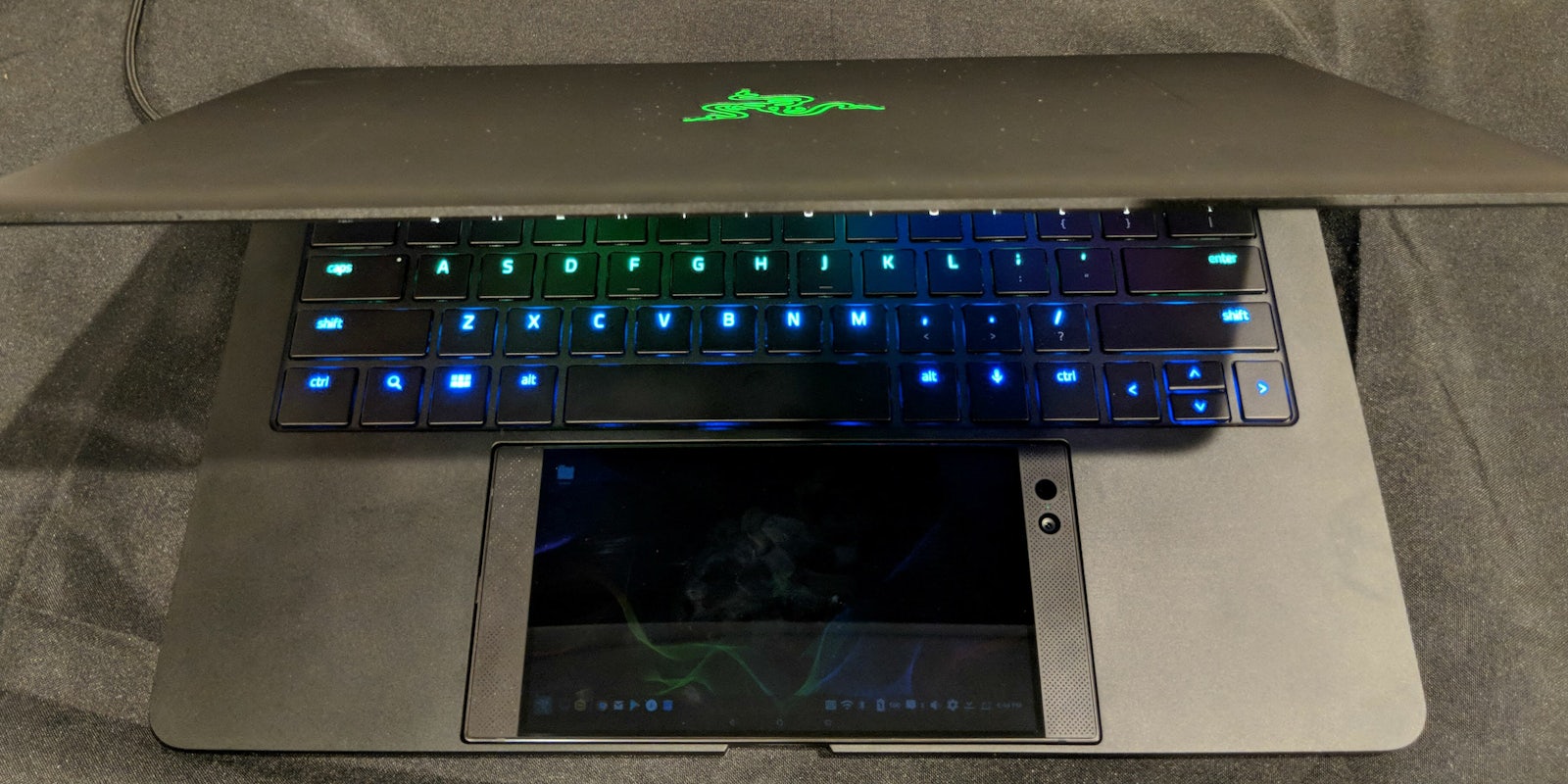It’s become a tradition for gaming giant Razer to show off a bizarre concept device at CES. This year, it didn’t disappoint. Following up on the eyewatering three-screen gaming display from last year is a laptop with a smartphone built into its chassis. We got some hands-on time with one of these prototypes and came away impressed.

Project Linda looks like an ordinary 13.3-inch laptop from afar, but get closer and you’ll see why it’s different from anything on the market. A rectangular hole where the touchpad would normally sit acts as a docking station. Compatible with the new Razer Phone, the cutout has a retractable USB port that connects and disconnects the smartphone. When connected, the phone acts as a touchpad for the laptop, extending all the contents of its 5.7-inch display onto the portable computer.

Its frame is a Razer Blade Stealth with a few interesting modifications. For one, there aren’t any speakers—the hybrid relies entirely on the front-facing stereo speakers of the phone. Also, the power button was replaced by a fingerprint sensor on the side and the computer’s chassis is 0.05-inches thicker to accommodate the phone. I also noticed the keyboard was customized for Android, with a dedicated home, back, app launcher, and Google Assistant buttons. The computer does still include a 720p webcam, audio jack, and USB-A and USB-C ports.

The mechanism that allows the phone to dock into the laptop is quick and seamless. Just place the phone in the felt-lined slot and press a special hardware key on the keyboard. A USB-C port slides out from the left side of the dock and locks the device in place. I was pleasantly surprised by how quickly and reliably the phone connected to the laptop and there was something extremely satisfying about the mechanism’s electronic “zip” noise.
Project Linda doesn’t enhance the performance of your smartphone with the hardware from a laptop, like the Surface Pro does with its tablet display. It’s all about bringing the convenience of a laptop’s design (large display, comfortable keyboard) to the smartphone. The machine is powered entirely by the smartphone’s system-on-a-chip (the laptop base only includes 200GB of storage and an extra battery).

The concept worked better than expected. After a few seconds, the phone’s Android interface popped up on the laptop display without a hitch. Unfortunately, functionality is limited. The laptop can only mirror what’s on the phone’s display, which makes it good for gaming and productivity apps but not much more. In the future, Razer hopes the two can function together while displaying different content, allowing the phone to act as a sort of Wii U gamepad for the laptop screen. However, most apps won’t be optimized for the new input until developers get their hands on tools for this one-of-a-kind device.
But these aren’t real concerns because, like the concepts before it, Linda is likely nothing more than a stunt to cut through the noise of CES.


